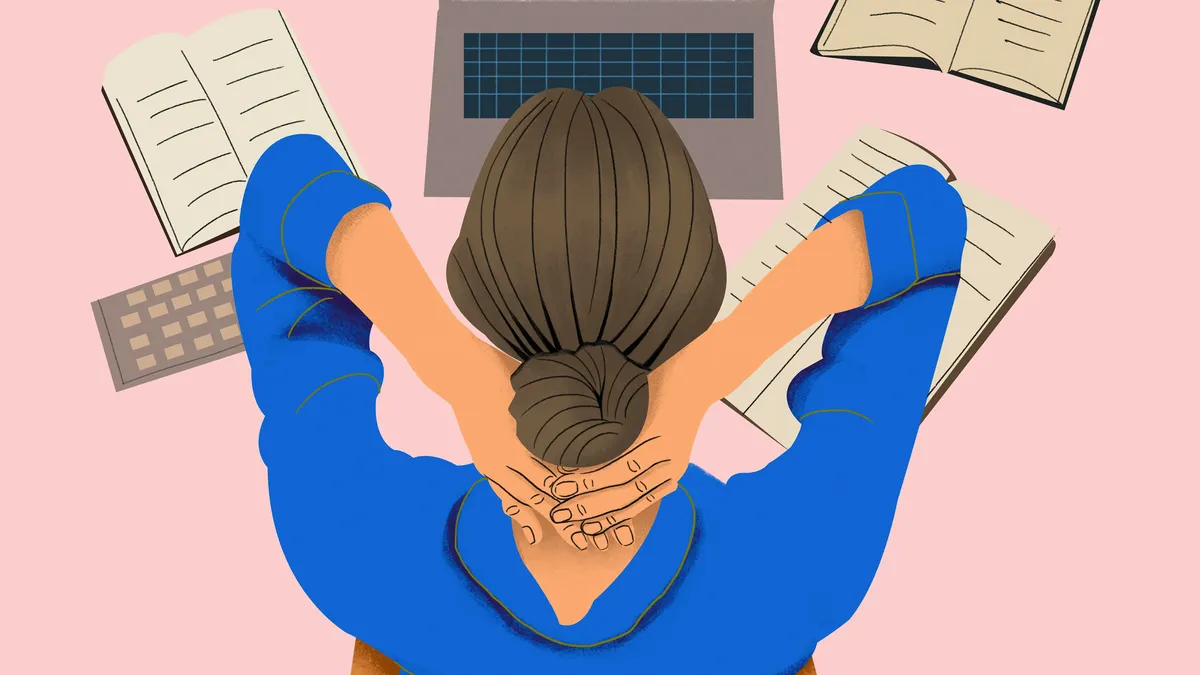

If “sitting is the new smoking,” as a health expert told me last year, then I’m a chain smoker.
From 9 a.m. to 5 p.m., my brain is super active at work, but my body is quite sedentary. It’s not unusual: data from the US Bureau of Labor Statistics shows that almost 60% of Americans do sedentary or light work, meaning they don’t spend much time lifting, standing or walking.
In Spain things are not very different. According to the results of the ENSE 2017 National Health Survey, more than a third (38.3%) of the population over 15 years of age is a student, worker or dedicated to housework. Sits most of the day.
But it is really harmful to our health. A 2024 study published in the Journal of the American Heart Association found that sitting for 11.6 hours or more per day was associated with a 57% increased risk of dying from any cause.
It is actually quite easy to counteract these fearful consequences. Research published in 2023 found that 20 minutes of exercise a day They can offset the life-shortening effects of prolonged sitting.
In the health team of Business Insider We often write about the benefits of physical activity, so I decided to try it myself. Here’s what worked when I tried to reduce my sedentary time at work for a week, and what didn’t.
A break every hour for “exercise snacks”

Exercise snacks are brief one or two minute intense training sessions duration. Studies suggest they can improve endurance, prevent strokes, and reduce the risk of premature death from cardiovascular disease and cancer. And who doesn’t like snacks?
So I tried breaking myself every hour to do two minutes of squats, jumping jacks, or walking up and down stairs.
In practice, it didn’t work for me. For starters, I found it difficult to remember to stop every hour when I had a lot of work. Even when I set reminders for myself, I realized that it wasn’t realistic to stop every hour, especially when I had a deadline.
It’s also much harder in the office than at home. It’s hard to find space—I wasn’t going to squat in our open-plan WeWork, sorry—and I also didn’t feel like coming back from the bathroom red and sweaty.
Stand-up meetings had little success
Standing or walking meetings were also easier at home than in the office. I could, with a little effort, make room on my bookshelf for standing video meetings, and I could listen to company-wide live streams while walking around the block.
But it would have seemed strange to be the only one standing at larger, in-person meetings. In 2018, researchers conducted a study on this, published in PLOS ONEand they discovered that people who remained standing in meetings felt psychological discomfort and worried that they were taking away authority from the people who led the meetings.
Also, as a journalist, I do a lot of interviews. I didn’t want to walk or stand during them because I needed to give my full attention to the interviewees.
Lunch breaks were better for longer workouts
Before starting this experiment, I already did exercises at mealtime, but I decided to take it a step further and include Pilates exercises during my breaks one hour two days.
I sacrificed a little time on TikTok and chatting with my roommate and had to eat at my table, but I was able to break up the periods of sitting.
I also went shopping one afternoon; I live in London so it’s not far to walk. This is a pretty normal mealtime activity for me, and I hope it helps me live longer: Do a vigorous activity in your daily life, like carrying heavy shopping bags and climbing stairswas associated with a lower risk of cancer in a 2023 study by researchers at the University of Sydney.

Just by going to the office I was less sedentary
Dr. Andrew Kaczynski, an associate professor at the University of South Carolina Arnold School of Public Health, told me that using public transportation is a easy way to make your workday more active. Commuting requires you to walk to and from stops and potentially stand while on the bus or train.
Thus, before even arriving at the office, my day is less sedentary. It was horribly hot in London this week, but it’s nice to know that being squished up against other commuters on the tube and sweaty walks from stations increased my longevity.
When I’m in the office, I also stand up while drinking coffee (read: gossiping) with colleagues, going back and forth between meeting rooms, walking to buy lunch at nearby stores, and (sometimes) walking up the four flights. of stairs to our space, so there are a lot more movement in my day than when I work from home.
The verdict
I probably improved my life expectancy a little bit, but I don’t see myself maintaining all of these things. Jumping up and down every hour and standing during meetings made me less productive, either because it interrupted my workflow or because I felt self-conscious.
But exercising at lunchtime, walking to the supermarket, and being more active in the office are pretty sustainable things. They make my days more enjoyable and will hopefully help me live longer.
Get to know how we work in BusinessInsider.
Tags: Health, Exercise, Healthy living
